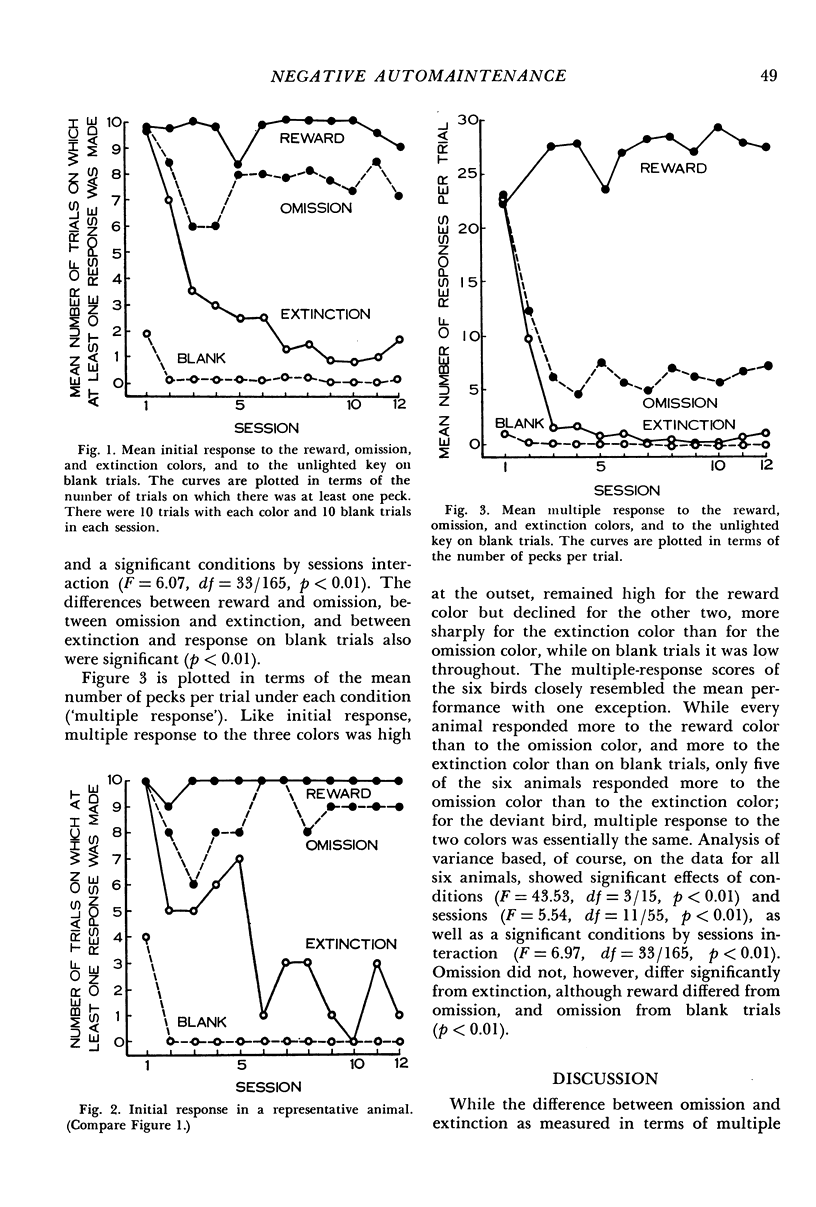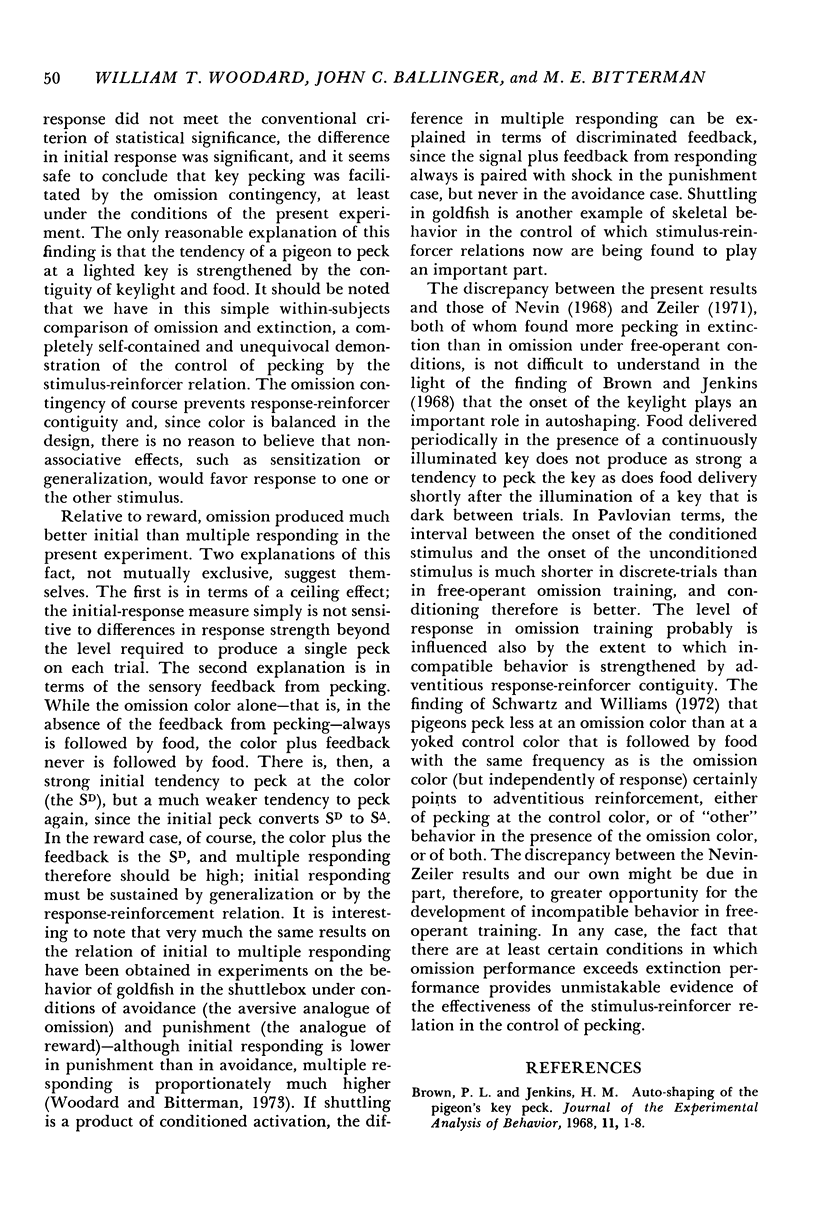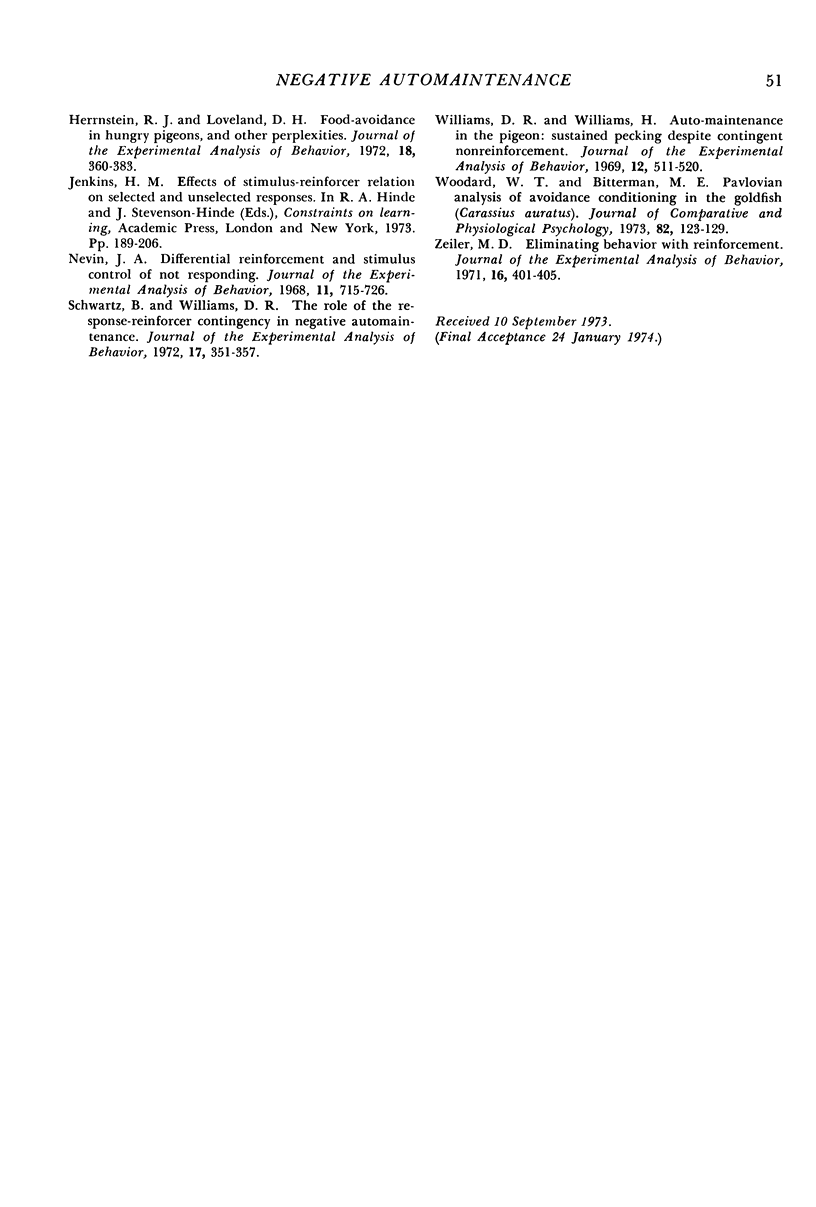Abstract
The key pecking of pigeons was autoshaped to three key colors paired with food in discrete trials. Then, the effects of three different color-correlated contingencies were compared: reward (presentation of food contingent on pecking), omission (presentation of food prevented by pecking), and extinction (no food). Two measures of performance were used: initial response (the number of trials with each color on which at least one peck was made) and multiple response (the total number of pecks per trial). In general, the reward color produced more pecking than the omission color, the omission color more than the extinction color, and the extinction color more than on blank trials with an unlighted key, although (relative to reward) omission produced a higher level of initial than of multiple responding. These results point clearly to the importance of stimulus-reinforcer continguity in the control of pecking.
Full text
PDF




Selected References
These references are in PubMed. This may not be the complete list of references from this article.
- Brown P. L., Jenkins H. M. Auto-shaping of the pigeon's key-peck. J Exp Anal Behav. 1968 Jan;11(1):1–8. doi: 10.1901/jeab.1968.11-1. [DOI] [PMC free article] [PubMed] [Google Scholar]
- Herrnstein R. J., Loveland D. H. Food-avoidance in hungry pigeons, and other perplexities. J Exp Anal Behav. 1972 Nov;18(3):369–383. doi: 10.1901/jeab.1972.18-369. [DOI] [PMC free article] [PubMed] [Google Scholar]
- Nevin J. A. Differential reinforcement and stimulus control of not responding. J Exp Anal Behav. 1968 Nov;11(6):715–726. doi: 10.1901/jeab.1968.11-715. [DOI] [PMC free article] [PubMed] [Google Scholar]
- Schwartz B., Williams D. R. The role of the response-reinforcer contingency in negative automaintenance. J Exp Anal Behav. 1972 May;17(3):351–357. doi: 10.1901/jeab.1972.17-351. [DOI] [PMC free article] [PubMed] [Google Scholar]
- Williams D. R., Williams H. Auto-maintenance in the pigeon: sustained pecking despite contingent non-reinforcement. J Exp Anal Behav. 1969 Jul;12(4):511–520. doi: 10.1901/jeab.1969.12-511. [DOI] [PMC free article] [PubMed] [Google Scholar]
- Woodard W. T., Bitterman M. E. Pavlovian analysis of avoidance conditioning in the goldfish (Carassius auratus). J Comp Physiol Psychol. 1973 Jan;82(1):123–129. doi: 10.1037/h0033820. [DOI] [PubMed] [Google Scholar]
- Zeiler M. D. Eliminating behavior with reinforcement. J Exp Anal Behav. 1971 Nov;16(3):401–405. doi: 10.1901/jeab.1971.16-401. [DOI] [PMC free article] [PubMed] [Google Scholar]


